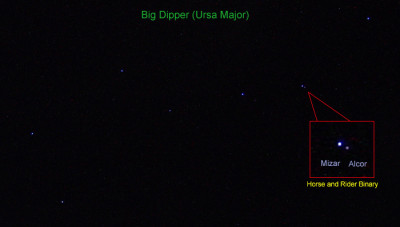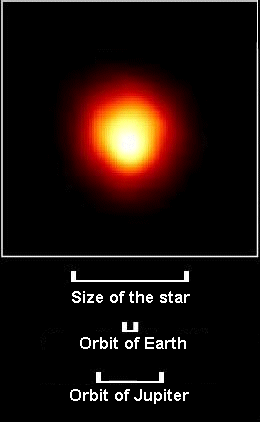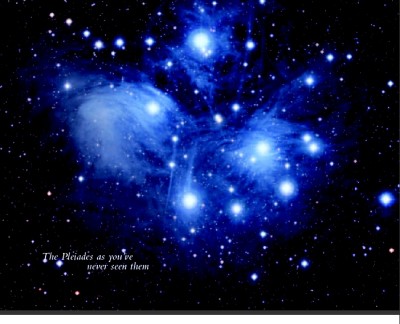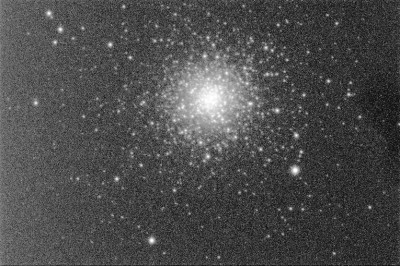
Here are some examples of objects that can be seen in our Spring Night Sky. The distances to these stellar systems range from 100 to 10,000 light years. All of these objects are in or around the disk of the galaxy.
Our Galaxy: A collection of Billions of Stars. As with all galaxies, it is a massive, gravitationally bound system consisting of stars, stellar remnants, an interstellar medium of gas and dust, and dark matter, an important but poorly understood component. The word galaxy is derived from the Greek galaxias (γαλαξίας), literally “milky”, a reference to the Milky Way. – courtesy Wikipedia
- Binary Stars
- Variable Stars
- Stars with Nebulosity: Small Clusters of stars embedded in Nebulosity (Interstellar Gas and Dust)
- Reflection Nebulae
- ‘Planetary’ Nebula – Dying stars that look like planetary disks
- Emission Nebulae
- Star Clusters : Hundreds to Thousands of Stars in and around the plane of the galaxy
-
- Open or Galactic Star clusters
- Globular (densely packed) spherical clusters
Binary Stars
- Mizar and Alcor – Both and Optical and True Binary System (within the system)
- Raselgethi – Alpha Herculis (seen in the Fall constellation Herculis)
The description below with the image describes a true binary pair .

The red hue that you see is visible naked eye and more pronounced in the eyepiece and carries very important spectral information. See Red Giants White Dwarfs
Variable Stars – Cepheid Variables
A variable star is not just a star that’s there, it’s a star that’s happening – Leslie Pelletier
Variable stars change brightness., Example Delta Cepheus (in the consellation Cepheus).Delta Cepheus changes in brightness over a period of 5 days . As the stars expands in size, it fades. As it contracts, it brightens.
Certain types of Variable Stars are important for measuring distances to clusters.The variable stars, called Cepheid Variables have a distinct Period-Luminousity curve that can be calibrated if we have measured their distance by another method, say stellar (or radio) parallax. Once we have calibrated the stars, we can extrapolate to distances beyond nearby clusters based on how brightly these Cepheids shine. The method was developed by Henrietta Leavitt: See Cepheid Variables – short History
Stars with Nebulousity (Gas and Dust)
There are two basic types of bright nebula (as opposed to dark (dust and gas) nebula):
Emission Nebula – are clouds of hydrogen gas glowing because their atoms have been ionized by the young, hot (blue) stars embedded within them. These nebulae shine from the energy they receive from the stars.These are interstellar clouds of ionized gas emitting light of various colours. The most common source of ionization comes from high-energy photons emitted from a nearby hot star.
- Star Formation: Sites of emission nebulae with H II regions, in which star formation is taking place and young, massive stars are the source of the ionizing photons.
Example: Orion Nebula Complex See: Orion’s Stellar Distances – https://millstonenews.com/2014/03/orions-stellar-distances.html
- Stars no longer on the Main Sequence – Stellar disks that resemble planets (because they are not point sources). These are planetary nebulae, in which a dying star has thrown off its outer layers, with the exposed hot core then ionizing them. – courtesy wikipedia
Example: M57 – the Ring Nebula
Image – courtesy P. Browne (120 ED refractor using maximDL)
Reflection nebulae are composed of cosmic interstellar dust which reflects the light of a nearby hot young stars. The energy from the nearby stars is insufficient to ionize the gas of the nebula to create an emission nebula, but is enough to give sufficient scattering to make the dust visible. Thus, the frequency spectrum shown by reflection nebulae is similar to that of the illuminating stars. Among the microscopic particles responsible for the scattering are carbon compounds (e. g. diamond dust) and compounds of other elements such as iron and nickel. – courtesy wikipedia
Example: Pleaides in Taurus
NOTE- In a telescope eyepiece or binoculars, you do see whisps of gas and dust – but NO colour and NO detail. Suffice to say you are receiving the photons from these objects directly from the object into your eye.
Star Clusters …
More often than not, stars congregate in large bunches.
For example, the Pleiades is a cluster of about 100 stars. http://web.cn.edu/jburton/Astronomy/starclusters.htm
Open clusters
A random collection of young, hot stars.
Usually includes gas and dust.
May detect formation of new stars.
Usually in the spiral arms of a galaxy
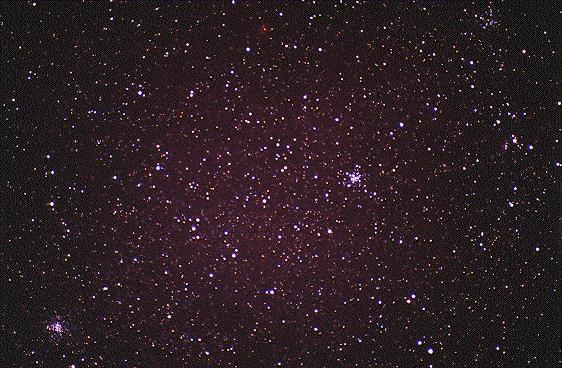
These can be classified using the Trumpler Classification:
- Degree of Concentration
I Detached clusters with strong central concentration
II Detached clusters with little central concentration
III Detached cluster with no noticeable concentration
IV Clusters not well detached, but has a strong field concentration - Brightness Range
1 Most of the cluster stars are nearly the same apparent brightness
2 A medium range of brightness between the stars in the cluster
3 Cluster is composed of bright and faint stars - Number of Stars in the Cluster
p Poor clusters with less than 50 stars
m Medium rich cluster with 50-100 stars
r Rich clusters with over 100 stars
Example
M37: Trumpler: I,1,r
 M36: Trumpler 1,3,m
M36: Trumpler 1,3,m M38 : Trumpler type I,1,r or I,2,r.
M38 : Trumpler type I,1,r or I,2,r.
What we can measure about Open Clusters:
1. Main Sequence Behaviour
-
- All stars in a cluster are about the same distance from us. If they are sufficiently close to us, the stars exhibit proper motion – and over the course of a decade will appear on an image at a slightly different position against the further background of stars.Historically, using the Moving Cluster method, if a cluster was close enough, like the Hyades, astronomers would measure proper motions.The proper motions appear to converge toward a point in the sky, which indicates the direction of travel for the cluster.
From the Doppler shift (using spectral data) we find the component of V away from us. From this and the direction we can find the whole Velocity vector,and eventually the distance to the cluster. See Hyades Moving Cluster calculation This technique works a little farther out than the parallax method 
- All stars in a cluster are about the same distance from us. If they are sufficiently close to us, the stars exhibit proper motion – and over the course of a decade will appear on an image at a slightly different position against the further background of stars.Historically, using the Moving Cluster method, if a cluster was close enough, like the Hyades, astronomers would measure proper motions.The proper motions appear to converge toward a point in the sky, which indicates the direction of travel for the cluster.
2. Evolutionary Track – courtesy http://web.cn.edu/jburton/Astronomy/starclusters.htm
All stars in a cluster probably formed relatively about the same time. They are also made of similar stuff. Because of this simplification,the H-R diagrams help us to figure out the age and life history of stars The H-R diagram of a young cluster might look something like this. Most of the stars are still on the main sequence.

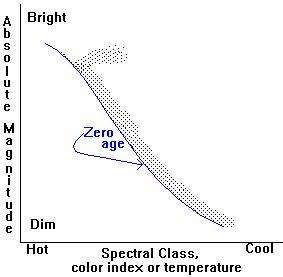 After about half a million years,the O and B stars begin to run out of hydrogen and drift away from the main sequence curve.This is because the higher mass stars use their hydrogen fuel faster and become red giants sooner. So this might be a typical H-R diagram for a cluster which s about a million years old.
After about half a million years,the O and B stars begin to run out of hydrogen and drift away from the main sequence curve.This is because the higher mass stars use their hydrogen fuel faster and become red giants sooner. So this might be a typical H-R diagram for a cluster which s about a million years old.

After a billion years or so, even more of the upper Main Sequence part of the curve will have wandered over into red giant territory.
 The above chart shows the evolutionary tracks of stars of different (solar) masses (normalized to our Star, the Sun). The heavier stars (hottest) burn more quickly and come off the Main Sequence in a just millions of years. The lighter ones have more ‘staying power’. Once we have determined the true members of a cluster, we can plot their Spectral/Luminousity Class vs. Temperature on the H-R diagram and date the cluster by the age of the first stars to drift off the Main Sequence.
The above chart shows the evolutionary tracks of stars of different (solar) masses (normalized to our Star, the Sun). The heavier stars (hottest) burn more quickly and come off the Main Sequence in a just millions of years. The lighter ones have more ‘staying power’. Once we have determined the true members of a cluster, we can plot their Spectral/Luminousity Class vs. Temperature on the H-R diagram and date the cluster by the age of the first stars to drift off the Main Sequence.
– Information courtesy OpenStax Astronomy – Chapter 22 Stars: From Adolescence to Old Age OpenStax Astronomy Book Download Page
For more detailed information on the HR diagram and stellar evolution see our Night Sky post: https://millstonenews.com/2014/03/stars-in-our-milky-way-galaxy.html
Naked Eye Open Cluster – Messier M44 – the Beehive cluster
 The Beehive Cluster consists of about 400 stars in a loose ‘swarm’. Most of the stars are in a region of about 15 light years. The cluster is only about 500 light years away – farther than the Pleiades. The bright orange stars are the ones that have had time to evolve into red giants. (Given the estimates of mass for those stars still remaining on the main sequence, we can use our models of stellar evolution to calculate the age of the cluster members – in this case – 400 million years or so).
The Beehive Cluster consists of about 400 stars in a loose ‘swarm’. Most of the stars are in a region of about 15 light years. The cluster is only about 500 light years away – farther than the Pleiades. The bright orange stars are the ones that have had time to evolve into red giants. (Given the estimates of mass for those stars still remaining on the main sequence, we can use our models of stellar evolution to calculate the age of the cluster members – in this case – 400 million years or so). This is a young collection of stars with only a few members evolving off the main sequence.
This is a young collection of stars with only a few members evolving off the main sequence.
Typical of Open Clusters:
- Loose collection of stars forming from the same diffuse cloud of gas. These are relatively young stars, with only a small collection of evolved stars moving off the main sequence
-
- Open clusters are often called ‘galactic clusters’ since they are found within the disk of stars which makes up the Milky Way (as opposed to Globular clusters which are not confined to the plane of the galactic disk).
-
Globular Clusters: A group of 100s or thousands of stars bound together in a densely packed spherical swarm of stars orbiting around the center of the Milky Way Galaxy. (Other galaxies have globular Clusters too). Stars in globular clusters are extremely old. They may have been the first parts of the galaxy to form (Billions of years old).
We find the age of the cluster by noting which stars have had the time to evolve into red giants. Such calculations, according to the model for stellar evolution are at least as old as the galaxy itself. Stars in this collection belong to a population of stars whose chemical composition consists mostly of hydrogen and helium.
Messier Object M3 shown below is a collection of stars in a ball more than 200 light years in diameter. These stars are held together by mutual gravitational attraction. There are more than 50,000 members that can be resolved in large telescopes. … Probably a true value of 1/2 million in this spherical volume. M3 is estimated to be 40,000 light years distance.


Question: How are Distance and Brightness of the Objects that we saw related?
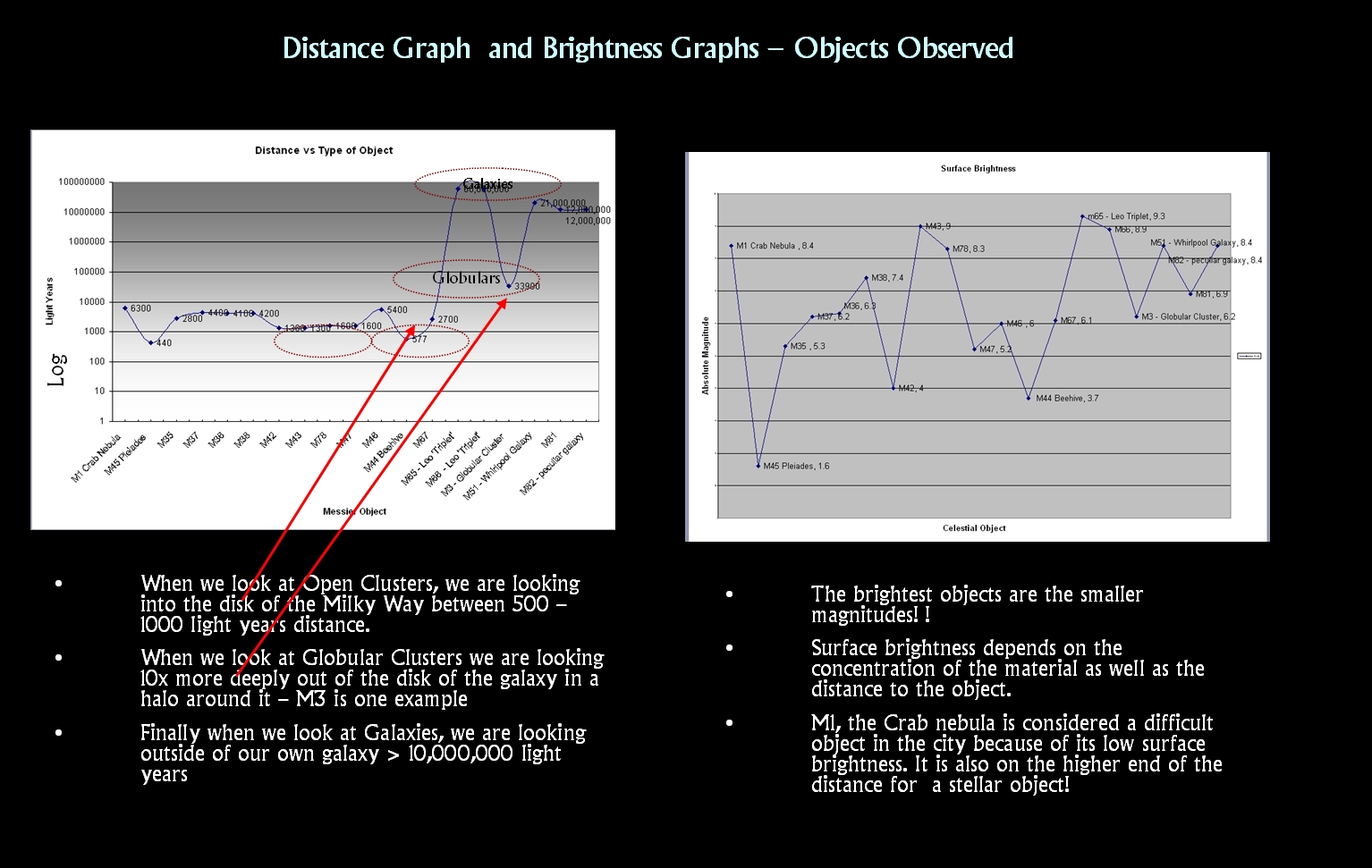 Here is where some of these objects are located in the Milky Way:
Here is where some of these objects are located in the Milky Way:



